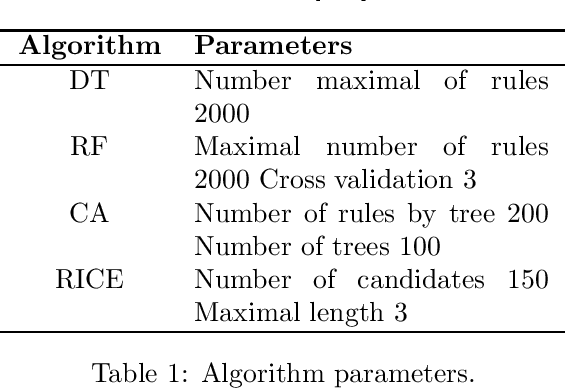A rigorous method to compare interpretability of rule-based algorithms
Paper and Code
Apr 06, 2020

Interpretability is becoming increasingly important in predictive model analysis. Unfortunately, as mentioned by many authors, there is still no consensus on that idea. The aim of this article is to propose a rigorous mathematical definition of the concept of interpretability, allowing fair comparisons between any rule-based algorithms. This definition is built from three notions, each of which being quantitatively measured by a simple formula: predictivity, stability and simplicity. While predictivity has been widely studied to measure the accuracy of predictive algorithms, stability is based on the Dice-Sorensen index to compare two sets of rules generated by an algorithm using two independent samples. Simplicity is based on the sum of the length of the rules deriving from the generated model. The final objective measure of the interpretability of any rule-based algorithm ends up as a weighted sum of the three aforementioned concepts. This paper concludes with the comparison of the interpretability between four rule-based algorithms.
 Add to Chrome
Add to Chrome Add to Firefox
Add to Firefox Add to Edge
Add to Edge